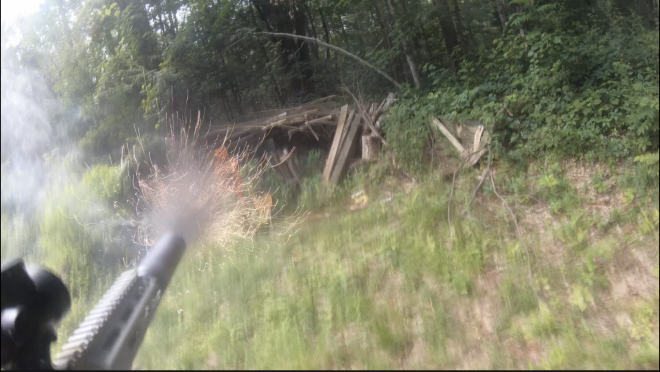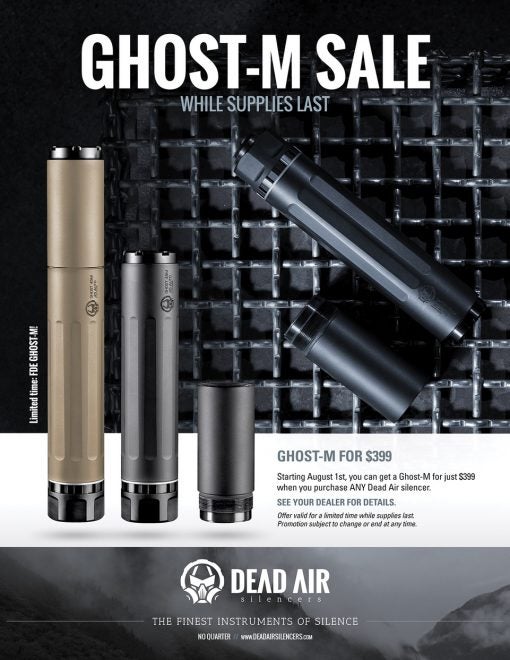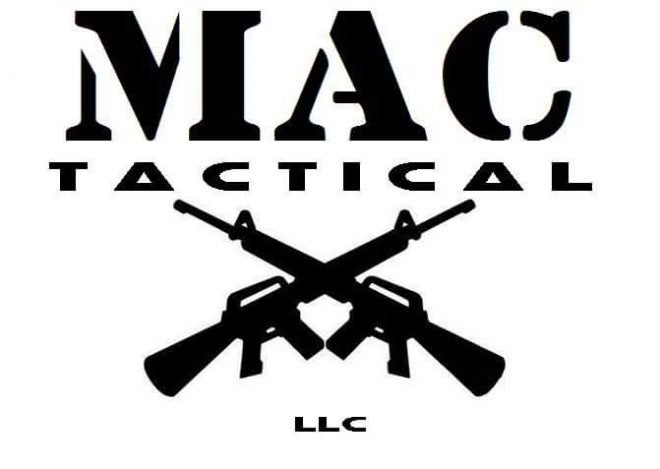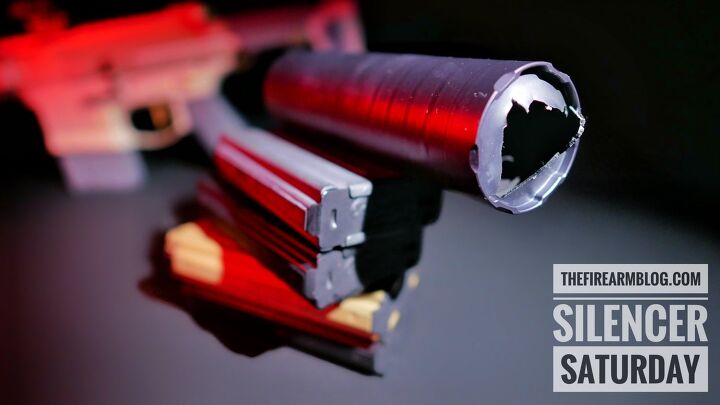Good morning everyone and thank you for joining us here at TFB’s Silencer Saturday. This week we have a bit of a Public Service Announcement brought to you by yours truly. As we all know, the longer you spend behind the trigger, the higher the likelihood that you will eventually make a mistake. This week I experienced a self-inflicted failure caused in part by improper ammo selection, but primarily due to hastily made decisions. Follow along for my silencer SNAFU and subsequent damage control and how you can avoid making a similar mistake.

SILENCER SATURDAY #31: SNAFU And Damage Control
To set the scene, I decided to grab some quick B-roll of me shooting a suppressed 300 Blackout Honey Badger on a steel target. Due to the close range, I decided to use some frangible ammo that is designed specifically to reduce backsplash and the risk of ricochets. Like many types of frangible ammunition, these rounds are made of compressed metal alloy powders. Don’t ask what type of ammo – since this was a human error, there’s no reason to drag a company’s name into the mix.
After jamming a few mags and setting up my GoPro rig, I walked down to the range and proceeded to slap some steel. Everything was going great until about round 30, when the gun’s report seemed off and the blast was somehow different. Luckily for us, the GoPro caught the destruction.
If you are familiar with shooting titanium silencers, some amount of spark coming out of the muzzle is to be expected. As microscopic titanium particles are superheated by pressure and unburnt powder, the burning metal produces sparks, much like you would see in fireworks. In this case, the display seen during the distruction was slightly more than the normal sparking from a titanium suppressor.
Back to the frangible ammunition. Some manufacturers advise against using frangible ammunition through suppressors, others say it is generally ok, provided you are shooting a barrel with a proper twist rate and the ammo is properly stabilized. In this case, did the frangible ammo come apart in the suppressor or was the 1:5 barrel twist rate too fast for a light weight (shorter) bullet? I ruled out the mount and suppressor tightness: everything was nice and snug. I’ll be investigating a bit more over the next few weeks.

SNAFU Lessons Learned and damage control:
- Slow down: Mistakes are made when you are outpacing your own critical thinking.
- Ammunition check: Are your rounds stable with your barrel’s rate of twist? Check for keyholing at short ranges BEFORE mounting your suppressor.
- Are you comfortable shooting frangible ammo in your suppressor? Does your manufacturer recommend against it?
- Mount check: Is your brake/flash hider properly torqued? Did you use shims and spacers (if required) instead of crush washers? Is your silencer securely and properly mounted?
- Is your barrel’s bore concentric to the bore of your suppressor? Use an alignment rod if you are unsure.
- If you plan on running your host/silencer hard, consider wearing gloves or using a thermal cover. (Immediately after the incident, I grabbed the hot can).
Because of the tubeless design, the manufacturer (Q, LLC) has said that the repair should only take a few days. And, they also didn’t make me feel like an idiot. Which remains to be seen; go ahead and do your worst, I can take it. But maybe someone will learn something from my mistake.
Next week:

We have three new silencers in house and we will get back to some decibel metering. The new OSS Helix HX-QD 556 and HX-QD 762 will be tested alongside the SureFire SOCOM 556 RC2 and the SilencerCo Saker 762 respectively.
OSS HX-QD 556
An extremely rugged suppressor, the HX-QD 556 is built with proven Flow-Through™ technology, delivers hearing safe mid-130s dB performance, has no barrel length restrictions, is full-auto rated, and easily passes the USSOCOM Reliability Stress Test – it’s the ideal suppressor for all 5.56 rifles.
- Weight 17.6 oz
- Length 6.44 in
- Diameter 1.6 in
- MSRP: $899
OSS HX-QD 762
A strong “utility player” suppressor built with proven Flow-Through™ technology. The HX-QD 762’s design and development were heavily influenced by the U.S. Army CSASS requirements, it delivers 136-139 dB performance, is full-auto rated up to 7.62, and is cross-platform compatible from 5.56 up to .300 WM — there’s no other suppressor like it on the market.
- Weight 19.6 oz
- Length 7.2 in
- Diameter 1.6 in
- MSRP: $999
Dynamic Defense has generously loaned us a Romeo upper receiver for the upcoming tests.
Dynamic Defense ROMEO SPECIFICATIONS:
- Barrel Length: 16.1″
- Caliber: .223 Wylde
- Gas System: Rifle
- Material: 41v50
- Twist Rate: 1:8
- Treatment: Melonite
- Precision Oversized M4 Extension Made In-House
- 0.750″ Gas Block Size
- Dimpled for Gas Block
- Guaranteed to reduce recoil compared to any other 16″ carbine or mid-length barrel.
- Covered by our Lifetime Warranty.
- Made for accurate follow-up shots, and less felt recoil, while remaining completely reliable in all .conditions. These barrels function with all factory-loaded ammunition.
- Compatible with 5.56 and .223 calibers due to the hybrid chamber.
- With proper equipment and a in-spec bolt, you can expect 1 MOA or better.
TFB’s Silencer Saturday is sponsored by Sig Sauer


Special Thanks to MAC Tactical for the FFL/SOT support:

 Your Privacy Choices
Your Privacy Choices
